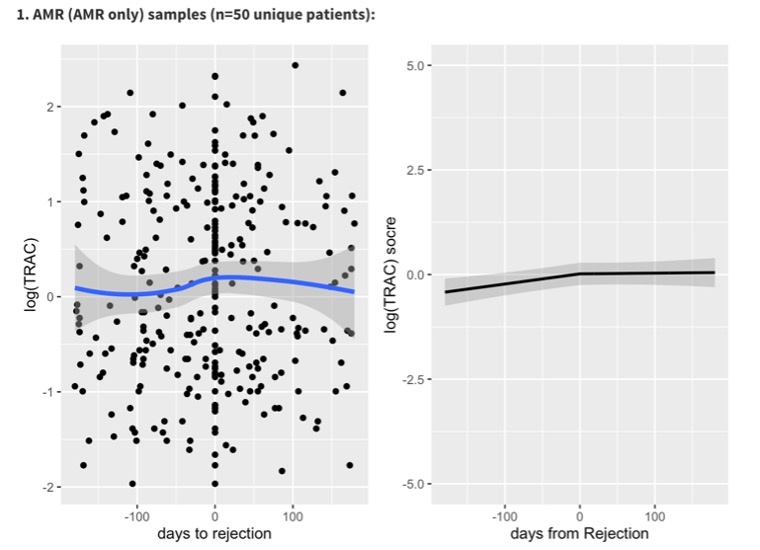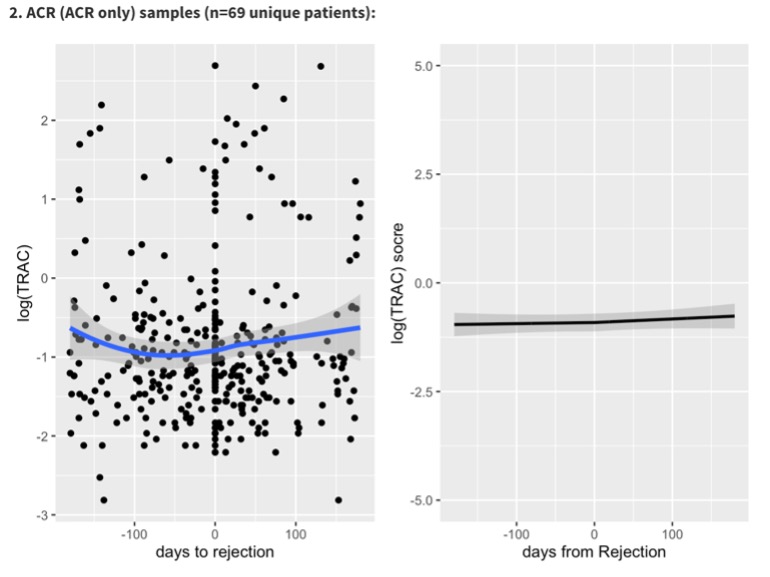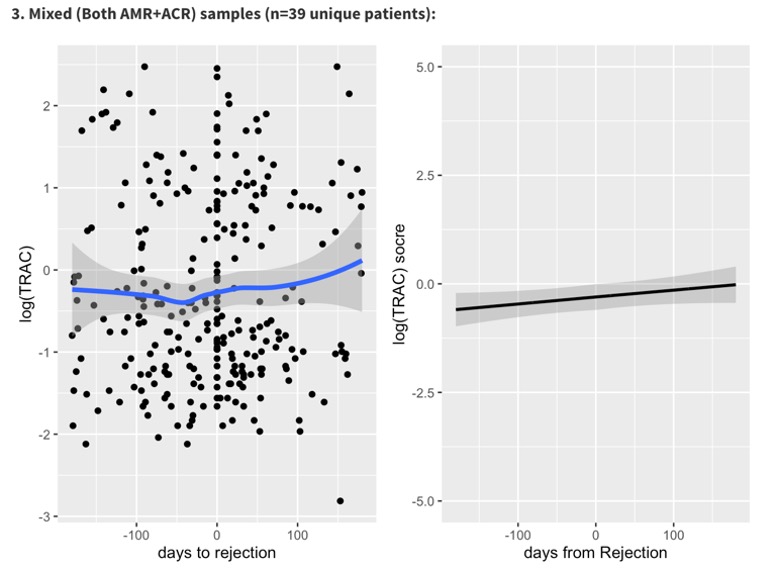Trends in Donor Derived Cell Free DNA Before and After Cellular and Antibody Mediated Rejection
1Northwestern University, Chicago, IL, 2Transplant nephrology, Northwestern University, Chicago, IL
Meeting: 2022 American Transplant Congress
Abstract number: 1571
Keywords: Genomic markers, Kidney transplantation, Protocol biopsy, Rejection
Topic: Basic Science » Basic Clinical Science » 17 - Biomarkers: Clinical Outcomes
Session Information
Session Name: Biomarkers: Clinical Outcomes
Session Type: Poster Abstract
Date: Tuesday, June 7, 2022
Session Time: 7:00pm-8:00pm
 Presentation Time: 7:00pm-8:00pm
Presentation Time: 7:00pm-8:00pm
Location: Hynes Halls C & D
*Purpose: The TRAC dd-cfDNA test was developed to detect acute kidney transplant rejection but can also detect subclinical rejection with improved performance in antibody-mediated rejection (AMR) compared to cellular rejection (ACR). We hypothesized that the trend in dd-cfDNA before and after AMR and ACR may differ and be useful in patient monitoring.
*Methods: Post hoc analysis of 158 subjects in the CTOT08 trial with clinical or subclinical rejection. Percent dd-cfDNA was examined 180 days before and after rejection. Rejections determined by paired biopsy and divided into ACR (figure 1), AMR (figure 2) and mixed ACR + AMR (figure 3). Log transformation of dd-cfDNA was performed to improve linearity. We compared the slope of dd-cfDNA before and after rejection by fitting a loess smooth curve and a linear mixed effect model.
*Results: Difference in slopes before and after rejection were compared between all 3 rejection types. While none of the differences in slope reached statistical significance, the biggest difference in change in slope was between the AMR and ACR groups, d=-0.003 (p-value 0.109) with AMR group showing a more negative deflection. Next were the differences between the AMR group and the mixed rejection group d=-0.002 (p-value 0.311) and then the ACR and mixed group d=0.001 (p-value 0.775).
*Conclusions: Defining trends of dd-cfDNA before and after different types of rejection will help inform clinical practice. Unlike abrupt changes in slope of scores with the TruGraf gene expression assay, the TRAC dd-cfDNA levels have minimal changes in slope in the 180 days before and after rejection, regardless of rejection type. Further study is needed to determine how long it takes to normalize dd-cfDNA levels after rejection.
To cite this abstract in AMA style:
Guo K, Friedewald J, Rebello C, Kinsella B, Park S, Zhao L. Trends in Donor Derived Cell Free DNA Before and After Cellular and Antibody Mediated Rejection [abstract]. Am J Transplant. 2022; 22 (suppl 3). https://atcmeetingabstracts.com/abstract/trends-in-donor-derived-cell-free-dna-before-and-after-cellular-and-antibody-mediated-rejection/. Accessed December 16, 2025.« Back to 2022 American Transplant Congress



